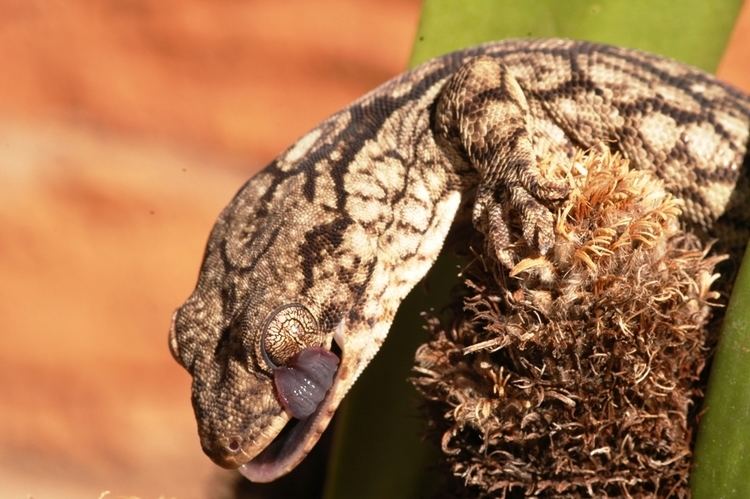Class Reptilia Rank Species | Phylum Chordata Subfamily Gekkoninae | |
 | ||
Similar Homopholis, Cape wolf snake, Atractaspis bibronii, Lygosoma lineata, Giant plated lizard | ||
Wahlberg's velvet gecko (Homopholis walbergii) is a large gecko up to 21 cm (av. 14–18 cm) that occurs exclusively in southern Africa. It is endemic to Miombo and Mopane bushveld of Botswana, South Africa, Swaziland, Zimbabwe and Mozambique. It shelters under tree bark, rocks, empty bird nests, and other places in coastal bush and mesic and arid savannas. It is so called because the skin looks and feels like velvet. Its back varies from dark grey to soft grey-brown and may be crossed with paler chevrons or crossbars or have mottled paler areas nestled along the centre of its back and spine. The largest part of their range covers Zimbabwe.
Contents
Behaviour
These geckos are nocturnal; however, they have been observed to occasionally be active during the day. They venture far from their usual roost only at night, when courtship generally occurs. They are frequently found in baobab trees and in the roofs and walls of traditional mud-huts and other human dwellings. They are mainly insectivores. Beetles make up the majority of this diet, with butterflies making up the next largest proportion, although they can also consume millipedes.
Breeding
Males and females exhibit little to no sexual dimorphism. Females reproduce annually once they reach sexual maturity. The female lays pairs of large, hard-shelled eggs that start soft and adhesive. Egg length, 17–19 mm, is not correlated to maternal length. These eggs are concealed under bark overhangs, rock crevices, etc.
